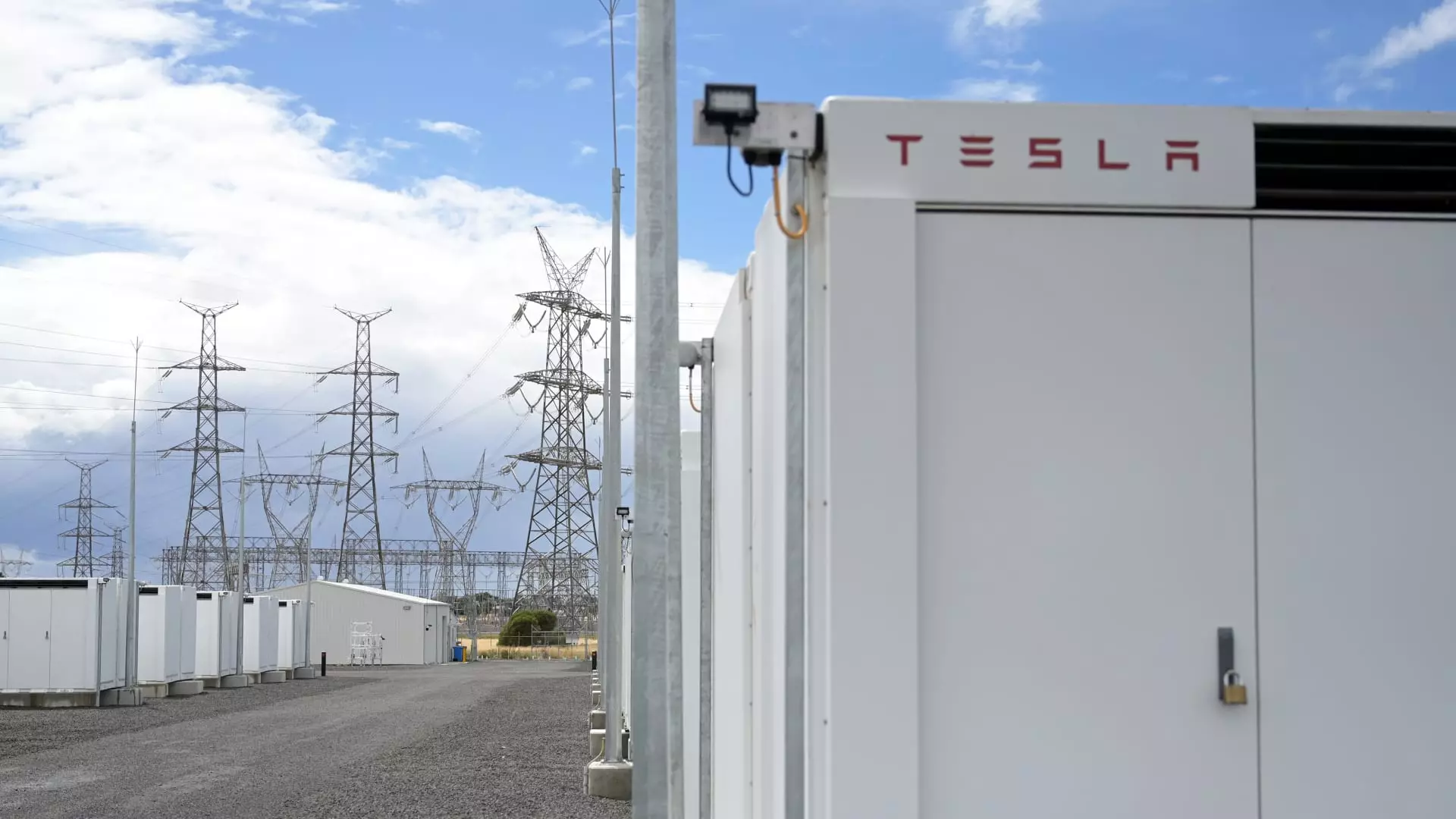Tesla’s recent announcement of its debut contract to construct a grid-scale battery power plant in China marks a significant turning point in the battle for energy supremacy. Amidst a backdrop of political tension between the United States and China, this venture feels less like a mere business deal and more like a strategic chess move. By investing 4 billion yuan (approximately $556 million) into a partnership with Shanghai’s local government and China Kangfu International Leasing, Tesla demonstrates a transition to a more proactive stance in a challenging geopolitical landscape. The implications of this project stretch far beyond simple financial gain; this is a bold assertion of technological prowess in an industry ripe for disruption.
The Significance of Utility-Scale Projects
While some might view Tesla’s foray into China’s energy storage sector as an opportunistic gamble, I see it as a declaration of intention for a sustainable future. The emphasis on utility-scale battery systems cannot be overstated, particularly as global energy sources evolve. Intermittent resources like solar and wind energy are becoming increasingly prevalent. However, the unpredictable nature of these energy sources creates a supply-demand mismatch that could destabilize electricity grids. By deploying technologies like Tesla’s Megapack—capable of delivering substantial power—on a large scale, Tesla is not just tapping into a growing market; it is actively shaping the way cities manage their energy needs. This is the essence of what it means to be a leader in energy innovation.
The Competitive Landscape
Tesla’s move is particularly noteworthy given its competition against Chinese titans like CATL and BYD, who have firmly entrenched themselves in battery technology and production. These companies have overwhelmingly dominated market share, making Tesla’s decision to engage in this high-stakes landscape audacious, if not fraught with challenges. CATL, with a staggering 40% of the global battery cell market, is not merely a competitor; it exemplifies the formidable obstacles Tesla faces. The announcement feels as though it embodies a blend of ambition and necessity—Tesla must determine its place in a rapidly changing energy battleground where the rules are still being written.
Politics at Play
Given the charged atmosphere surrounding U.S.-China relations, Tesla’s engagement with Chinese authorities seems, at best, an act of bold defiance. With a legacy of tariffs and mistrust between the two nations, particularly during Trump’s administration, Tesla’s trajectory in China cannot be isolated from the political context. Nevertheless, paradoxically, it could also be viewed as a hopeful sign—a chance for dialogue and cooperation through shared efforts in energy sustainability. Yes, the relationship is strained at the governmental level, but at the grassroots of technological advancement and energy solutions, there may be room for collaboration. This contradiction infuses the deal with implications that extend beyond business.
The Road Ahead: A Quest for Escalated Capacity
Tesla’s ambition isn’t forsaking market dynamics in favor of mere corporate advancement. The company is aligning its goals with China’s burgeoning demand for energy solutions. In line with the Beijing government’s objective to add nearly 5 gigawatts in battery-powered electricity supply by 2025, Tesla’s project could play a pivotal role in meeting these aggressive targets. Moreover, the anticipation surrounding global battery energy storage, which saw a dramatic increase last year, positions Tesla favorably. By exporting its innovative Megapacks to regions like Europe and Asia, Tesla not only solidifies its market presence but also champions a global movement towards sustainable energy.
Tesla’s strategic move into the Chinese battery market should be viewed beyond economic dimensions; it circles back to the fundamental goal of transforming energy consumption patterns worldwide. The interplay of innovation, politics, and market dynamics makes this venture an emblem of what the future may hold. In this fragile era dictated by climate urgency and geopolitical tensions, Tesla’s actions could be perceived as a clarion call for collaboration in renewable energy advancements. The next few years will reveal whether this ambitious project not only reshapes Tesla’s footprint in China but also leaves a lasting mark on the global quest for sustainable energy solutions.

